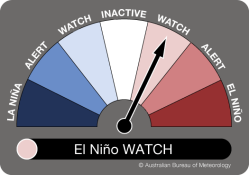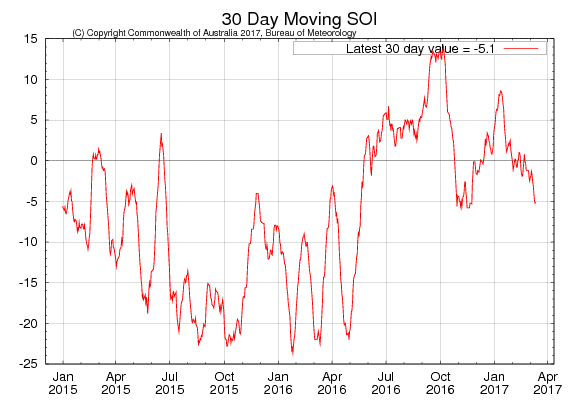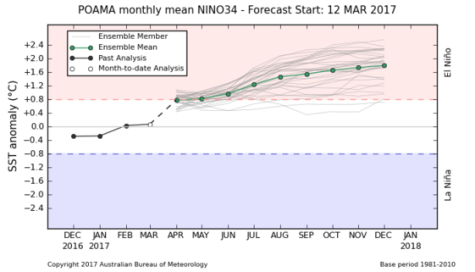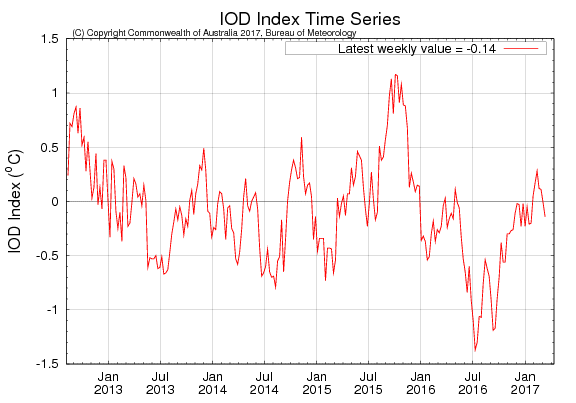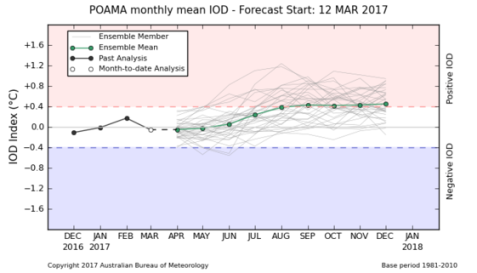NT seasonal outlook
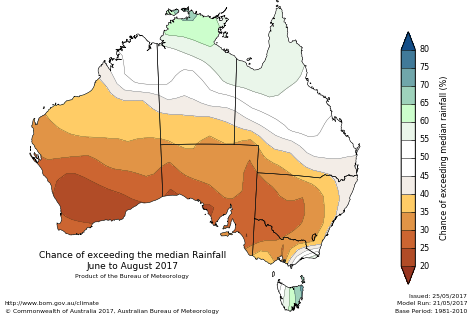
Source: The Australian Bureau of Meteorology.
The national outlook for June to August 2017 period indicates that:
- Drier than average conditions are expected across the southern two-thirds of the NT, south of Elliott.
- Wetter than average conditions expected across the Top End, Katherine and Roper districts
- Warmer than average days and nights are more likely across the Southern NT.
- Cooler than average days and nights are more likely across the Northern NT.
Without a strong influence from the Indian or Pacific oceans, secondary climate drivers contribute more to the outlooks. Higher than average pressure is forecast over the Great Australian Bight and southern and western Australia, meaning fewer rain-bearing systems are likely to cross the coast.
Bureau climatologists continually monitor the climate for any significant developments, with information on El Niño/La Niña and IOD events available fortnightly via the ENSO Wrap-Up. For more information on seasonal outlooks visit the BOM website.
Seasonal Indicators | Comments (sourced from the Australian Bureau of Meteorology) | |
El Niño Southern Oscillation (ENSO) Current outlook: | ENSO at neutral. Although ENSO is currently neutral, some indicators show an increased chance of El Niño developing during 2017. While recent changes in tropical Pacific Ocean sea surface temperatures and the Southern Oscillation Index (SOI) are typical of those expected prior to an El Niño, both these and other indicators remain firmly within neutral boundaries. All climate model outlooks show further warming of the Pacific is likely, with six reaching El Niño thresholds during the southern hemisphere winter of 2017. El Niño WATCH means that there is approximately a 50% chance of El Niño developing in 2017, which is about twice the normal likelihood. |
|
Indian Ocean Dipole (IOD) www.bom.gov.au/climate/enso/#tabs=Indian-Ocean Current outlook: Neutral | IOD also neutral. The IOD also remains neutral (neither positive nor negative), as is typical at this time of year. When the IOD is neutral it has limited impact on Australian climate. However, the continued presence of much warmer than average water to the north and northwest of Australia may see continued influence on Australia, including enhanced rainfall. |
|
Give feedback about this page.
Share this page:
URL copied!
